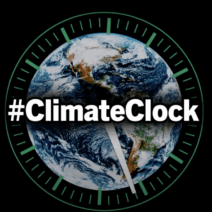Climate change, an increasingly urgent and palpable phenomenon, manifests in myriad ways, intricately entwining the future of our planet with its present state. Historically, the discourse surrounding climate change has oscillated between scientific elucidation and monumental disbelief, yet the repercussions are undeniably evident. This article endeavors to visually conceptualize how climate change systematically disrupts Earth’s ecological and social fabrics, thus offering a multifaceted perspective on its dire implications.
To fully comprehend the breadth of climate change’s impact, a key aspect is alterations in Earth’s temperatures. Over the past century, global temperatures have risen at an unprecedented rate, with the last few decades witnessing the starkest increases. These rising temperatures, subtly woven into our everyday experiences, produce a cascading effect on the climate system. For instance, as temperatures surge, the frequency and intensity of heatwaves escalate, heralding devastating consequences for both human and natural ecosystems. Imagine a summer when the sun scorches the earth mercilessly; this progressively becomes the norm and forebodes dire agricultural challenges.
One cannot overlook the intricate relationship between climate change and extreme weather phenomena. Visual representations of climate data illustrate a clear trend: hurricanes intensifying due to warmer ocean temperatures, leading to unprecedented storms that devastate coastal communities. The 2017 hurricane season serves as a poignant reminder of nature’s escalating fury. Images depicting flooded cities, ravaged infrastructures, and displaced families punctuate our reality. Here, a shift in perspective prompts an urgent inquiry: how do we fortify our societal structures against these inevitable disasters?
Additionally, the phenomenon of melting polar ice caps intricately underscores the ramifications of climate change. This visual evidence manifests starkly in the panoramic images of retreating glaciers, revealing the stark reality of sea-level rise that threatens coastal infrastructures worldwide. Coastal cities such as Miami and New Orleans stand on the frontlines, grappling with the dual threats of flooding and saltwater intrusion into freshwater resources. The ramifications extend beyond mere physical displacement; they encompass loss of cultural heritage and the displacement of communities, unveiling a somber narrative that begs for immediate policy intervention.
Another pivotal aspect of climate change is its insidious effect on the natural world, particularly on biodiversity. Rising temperatures and shifting precipitation patterns create an inhospitable environment for numerous species, leading to habitat fragmentation. In stark visual contrast, infographics delineate the alarming rates at which species face extinction, highlighting ecosystems where delicate balances have been irrevocably disrupted. Coral reefs, often termed the “rainforests of the sea,” vividly illustrate this phenomenon, as coral bleaching renders once-vibrant underwater landscapes into ghostly remnants. Such ecological degradation subtly reverberates through the food chain, potentially destabilizing marine ecosystems that underpin global food security.
The agricultural sector, often seen as the backbone of human sustenance, finds itself inextricably linked to the vicissitudes of climate change. Diminished yields due to altered weather patterns manifest in visual data, demonstrating how farmer livelihoods are jeopardized. Droughts and floods, once circumstantial anomalies, have become alarming regularities in various regions around the globe. Detailed charts elucidate the implications of these changes, suggesting a future where food scarcity exacerbates socioeconomic disparities and ignites geopolitical tensions. Navigating this impending crisis demands innovative agricultural practices and sustainable resource management to ensure food security for future generations.
Furthermore, social repercussions unfold as communities grapple with the realities of climate-induced migrations. Visual data encapsulates the grueling journeys of climate refugees, illustrating forced migration as a direct consequence of inhabitable environments. Countries with less resilience to climate impacts face unprecedented challenges as their populations seek refuge in more stable regions. This migration raises myriad socio-political concerns, igniting debates on immigration policies amid ethics and humanitarian considerations. Picturing these human stories alongside the statistics poignantly underscores the profound interconnectivity of climate change and human rights, beckoning towards a compassionate global response.
In contrast, technological innovations and resilience-building strategies present a glimmer of hope amid the dire narratives. Cities around the world are developing green infrastructure, with visuals of urban greenery proliferating in place of concrete expanses. These eco-friendly modifications not only enhance urban aesthetics but also mitigate the impacts of climate change through improved air quality and decreased heat island effects. A visual breakdown of these initiatives highlights collaborative efforts by governments, NGOs, and communities alike, shedding light on innovative practices to adapt and mitigate climate impacts.
In summation, climate change affects Earth in profound and multi-dimensional ways, weaving complex threads that intertwine natural systems, human societies, and technologic advancements. Through the visual breakdown of these phenomena, society is prompted to reevaluate its foundational beliefs about interaction with the environment. The dual lens of calamity and innovation calls for a commitment to sustainability, resilience, and empathy in addressing the multifaceted challenges posed by climate change. As the urgency of the crisis becomes increasingly clear, so too does the imperative for collective action—a call to arms that encompasses every individual, community, and nation in this pivotal battle for the planet.


